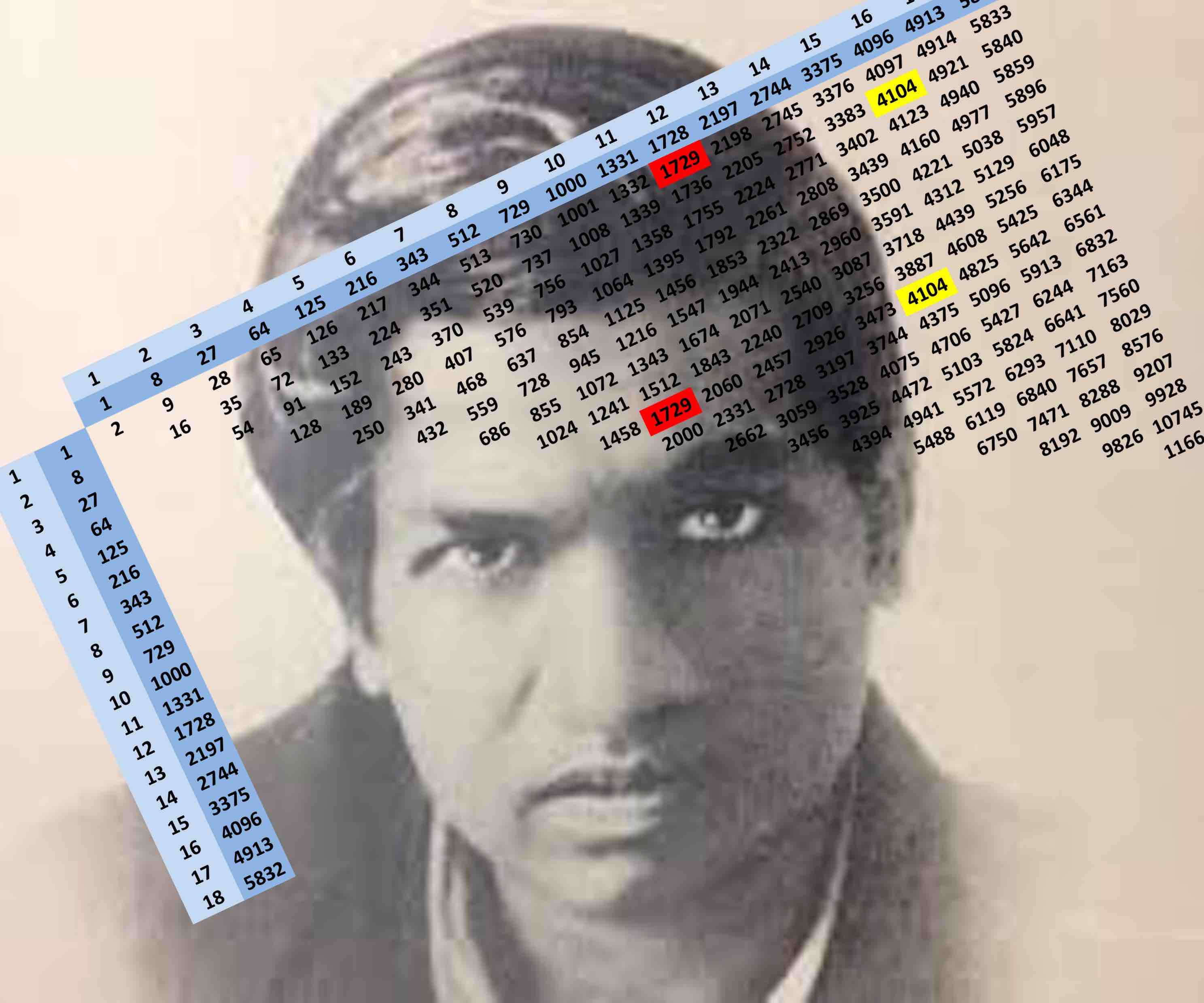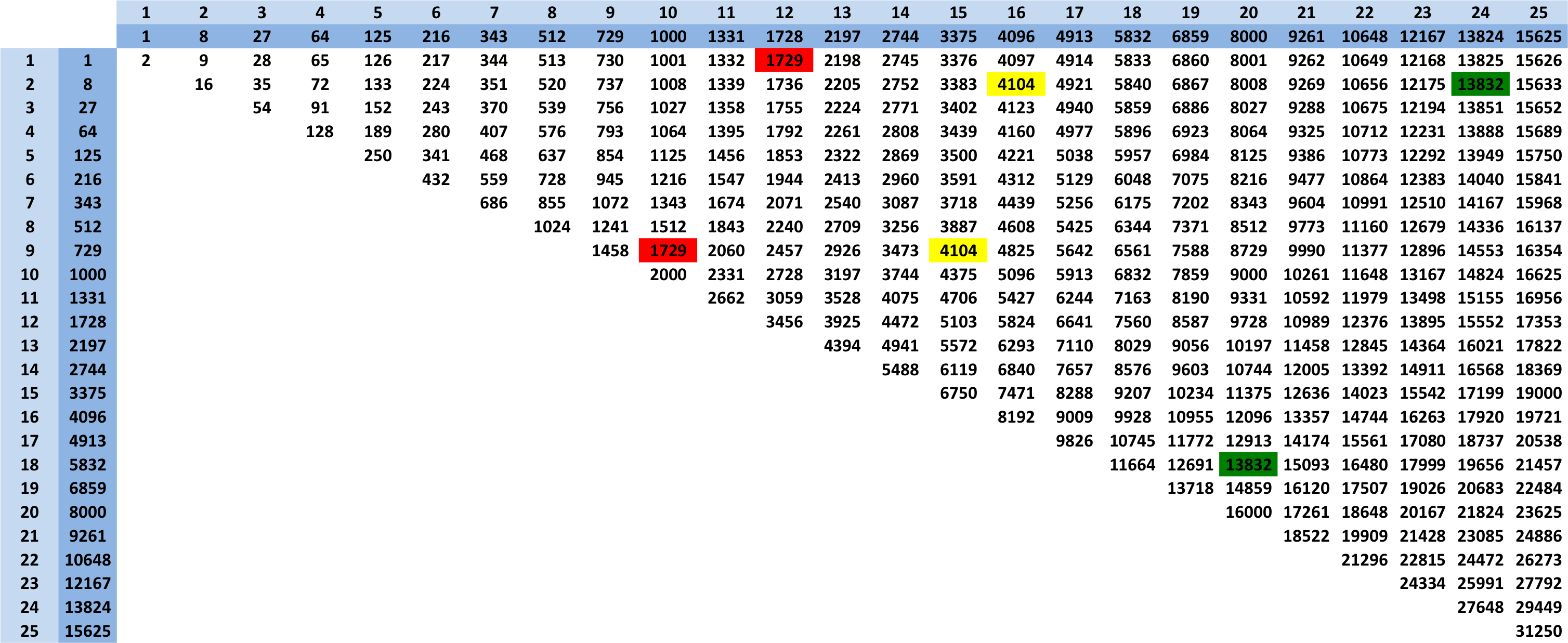4104 is Second Place!
January 6, 2018
Yoni Nazarathy

You can search the web for "nobody remembers second place" and get about search results. However if you search for the opposite: "somebody remembers second place" you get about 1.3 million results! So is second place memorable or not? I guess it depends on who you ask.
Now when it comes to numbers, is there also a first and second place? Well I guess, you should define the competition. Here is one famous example:
Find a number, , as small as possible, that can be expressed as the sum of two positive whole cubes in more than one way.
Try for example the number . You can write
As you can see it is the sum of two cubes. So this is one way. The question is now if there are other numbers, , such that
Try as you might, you won't find such and . So the smallest is clearly not . What is the smallest such ?
If you are a math enthusiast, or if you watched The Man who Knew Infinity, then you probably heard about the extraordinary Indian mathematician Srinivasa Ramanujan. In this clip from the movie, Ramanujan states that comes first.
His friend and colleague, G. H. Hardy, was not aware of such a "competition". Later in historical notes, Hardy mentioned Ramanujan's observation about :
Indeed Ramanujan was a remarkable man of numbers and mathematics. Few are the people who would recognise an arbitrary number like and make such an observation about it:
1729 comes in first place.
You may watch this neat Standupmaths video where Matt Parker tells us much more about Ramanujan's investigations:
https://epsilonstream.com/video/plqapk
So if comes first who comes second? Is there a second? A third? How would you compute that? The following image of a simple Excel spreadsheet does the job:

You can download our example spreadsheet, or you can try and create one of your own. It is nothing more than an "addition table" of the cubes , , , ,... all the way up to ( cubed). You can then inspect it visually and see that is the first such duplicate value. So who comes second? You got it: .
Actually, when creating such a sheet, you don't have to visually inspect. You can also try to use Excel's conditional formatting and have Excel highlight duplicate values.
There is much more to discover about the sequence , , ,.... and related sequences. Some more information is in this page. You can also search for "1729" in our free Epsilon Stream App to find out more.
